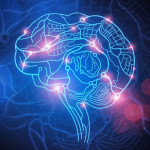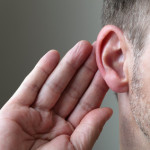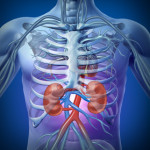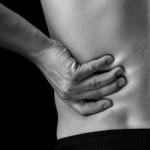The Cerebello-Limbic Pathway: a Link between Mind and Body?

Strong evidence supports the connection between mind and body and most neuroscientists agree that cognitive activity and movement are powerfully connected. The first evidence of such a linkage originated decades ago and eventually redrew the concept of cognitive function, the intellectual process by which one becomes aware of, perceives, or comprehends ideas. The cerebellum, a…
Prefrontal Cortex Lesions and Social Cognition

Recent studies have shown that brain lesions to the prefrontal cortex may cause behavioral disturbances, such as dysfunctional emotional and social behavior. Lesions to this area can lead to severely negative psychosocial consequences: poor recognition of emotions, deficits in empathy and in the ability to understand thoughts and intentions of others. Following this line of thinking, researchers from…
MR Volumetric Assessment in Menière’s Disease

Endolymphatic hydrops is the pathological hallmark of Menière’s disease, a disorder of the inner ear that causes episodes of vertigo, ringing, a feeling of fullness or pressure in the ear, and fluctuating hearing loss. This particular characteristic of the disease consists of a distension of the endolymphatic space, which is the endolymph-filled area contained by the…
Dll4 Blockade and VEGF Inhibition in a Mouse Model of Kidney Cancer

Solid tumors require the growth of new blood vessels (angiogenesis) for oxygen and nutrient supply. This concept is nowadays solidly accepted and has spurred substantial efforts to develop anticancer therapeutics that interfere with tumor angiogenesis. Most current therapies are designed to block the vascular endothelial growth factor (VEGF) signaling pathway. VEGF’s normal function is to…
Effects of Local Anesthetic Agents on Intervertebral Disc Degeneration

The intervertebral disc is an important structure that is found between each vertebra in the spinal column. These discs are designed to absorb pressure and keep the spine flexible during movements. Without the cushion effect given by the discs, the vertebrae in the spine would not be able to provide the movement needed to bend…
Identifying Lesion Location in Horner Syndrome

Horner syndrome is a combination of signs and symptoms caused by the disruption of a nerve pathway that goes from the brain to the face and eye. The classical clinical findings associated with Horner syndrome are decreased pupil size (miosis), drooping eyelid (ptosis) and decreased sweating on the affected side of the face. This condition…
Disease-Modifying Drugs in Multiple Sclerosis

Multiple Sclerosis (MS) is an autoimmune disease in which the body’s own immune system attacks the tissue surrounding the nerve fibers in the brain, spinal cord, and optic nerves. This covering, which coats, insulates, and protects nerves, is made of a fatty substance called myelin. When this material is destroyed, communication between the brain and…
Early-Life Stress and Amygdala Hypertrophy

Different forms of early-life stress may shape the development of brain areas involved with emotion processing and may increase vulnerability to adult mental or behavioral disorders. Examples of types of traumatic events include natural disasters, experiences in institutional care, assaults, witnessing violence and physical, sexual and emotional abuse. Considering that exposure to stress in humans…
Remote Ischemic Preconditioning: a Neuroprotective Strategy

The small number of effective options to treat neurological dysfunctions following coronary artery bypass grafting provides a strong impetus for defining strategies that may reduce their incidence. Ischemic preconditioning offers a powerful form of endogenous protection against myocardial infarction. It is performed alternating brief cycles of nonlethal ischemia – restriction in blood supply to tissues…
Hypermetabolism: A Compensatory Mechanism In Alzheimer’s Disease?

Neuroplasticity refers to the brain’s ability to change throughout life. This process can be defined as the potential of the neurons to react to intrinsic or extrinsic inputs and to change, temporarily or permanently, their biochemical, physiological and morphological characteristics. The nervous system is capable of adapting to new developmental and environmental situations or neuropathological…
 AnalyzeDirect
AnalyzeDirect